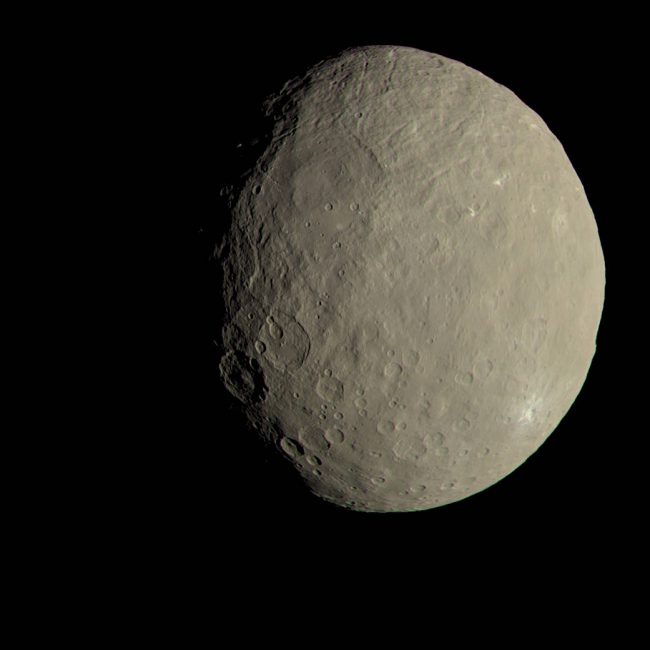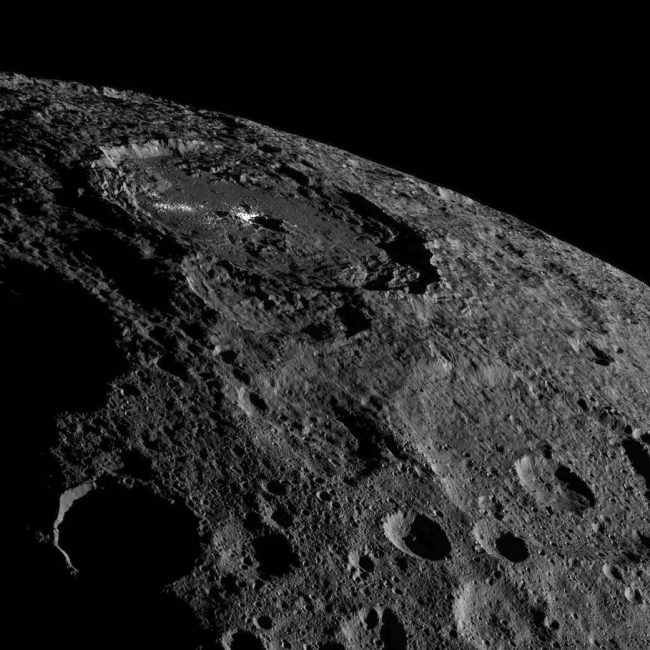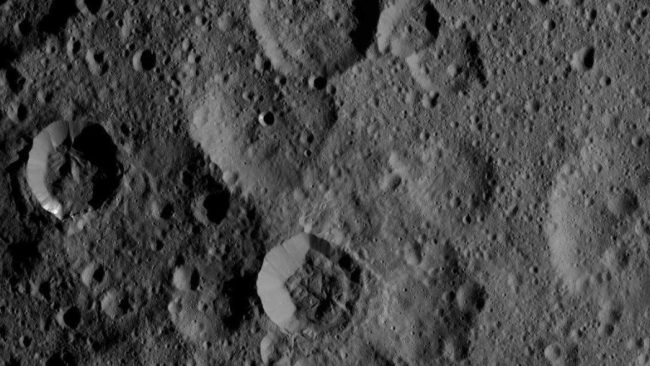Space is a huge, wide open place. So it makes sense that there are more things going on than we can keep track of sometimes. In just the last 24 hours, we've been treated to a couple breathtaking sights. Want to have a look-see? Of course you do! So let's start the countdown and go! 3...2...1...
Is this dwarf full of water?

A picture of Ceres adjusted to show what its colour would like to the human eye. (Courtesy of NASA)
The asteroid belt is a collection of thousands of different-sized space rocks. These orbit the Sun in between the planets Mars and Jupiter. The biggest passenger in this parade is called Ceres. Ceres is a dwarf planet—though it's much smaller than the Moon, it's still fairly large and is about as wide as Texas. Scientists have been interested in it for a long time, mainly because they believe that it might contain an underground ocean just beneath its surface. They've even noticed what they believe to be water vapour escaping Ceres through small holes in its surface!
A new Dawn
That's why NASA sent a probe to Ceres called Dawn. Dawn arrived back in March of 2015, and it has been collecting information and photos ever since. The probe's newest images show something fascinating. For a long time, scientists have puzzled over a couple bright spots on Ceres. These areas are white and reflect more light than the rest of the dwarf planet. Here's the brightest one, found in Ceres' Occator Crater.

(Courtesy of NASA)
Scientists believe that this crater is actually a large plain of salt. And why is that important? Because this type of salt deposit usually means one thing: it was left behind by water that turned to vapour. You can see similar examples of this right here on Earth.
The Salar de Uyuni in the Andes mountain range in Bolivia is the largest salt flat on Earth. It was left behind after a prehistoric lake evaporated. (Getty Embed)
Researchers guess that when the asteroid that made the crater hit Ceres, the impact released underground water, which escaped into space. In the end, it is more evidence that maybe, just maybe, there is some kind of microbial (or super, super mini) life inside Ceres. Neat-o!
Take a spin through space
And if that wasn't enough mindblowing stellar stuff, well, just sit back, my friends. The crew of the ISS (International Space Station) have released a 360° video and it... is...
WOW.
We'll let the video speak for itself. Hit play, and let your finger (and your mind) wander. Be sure to play it again and again... there's no way to see it all the first time! Enjoy!
 The space probe Dawn is helping us get up close and personal with Ceres, the biggest "asteroid" in the Solar System. (Courtesy of NASA)
The space probe Dawn is helping us get up close and personal with Ceres, the biggest "asteroid" in the Solar System. (Courtesy of NASA)









